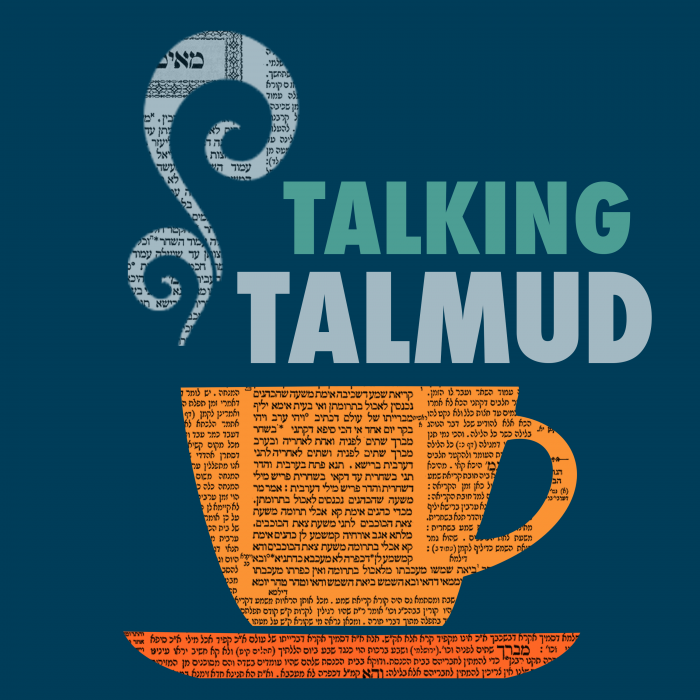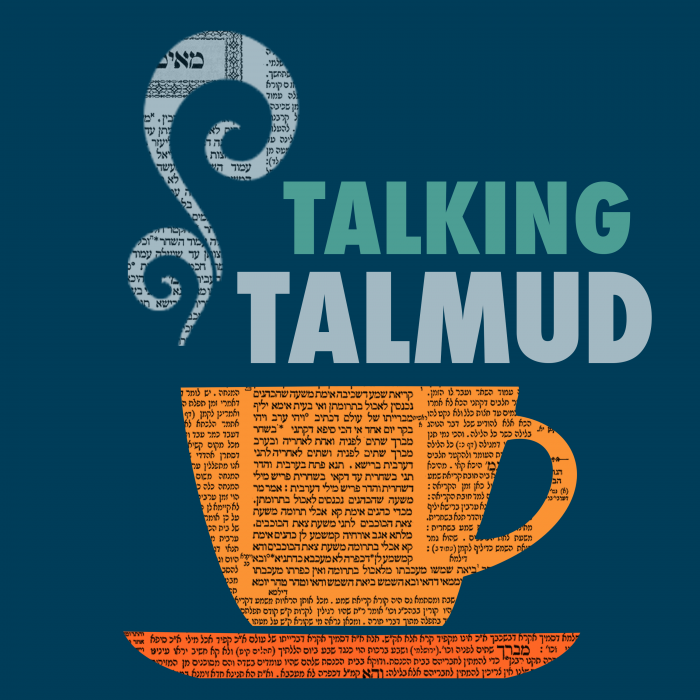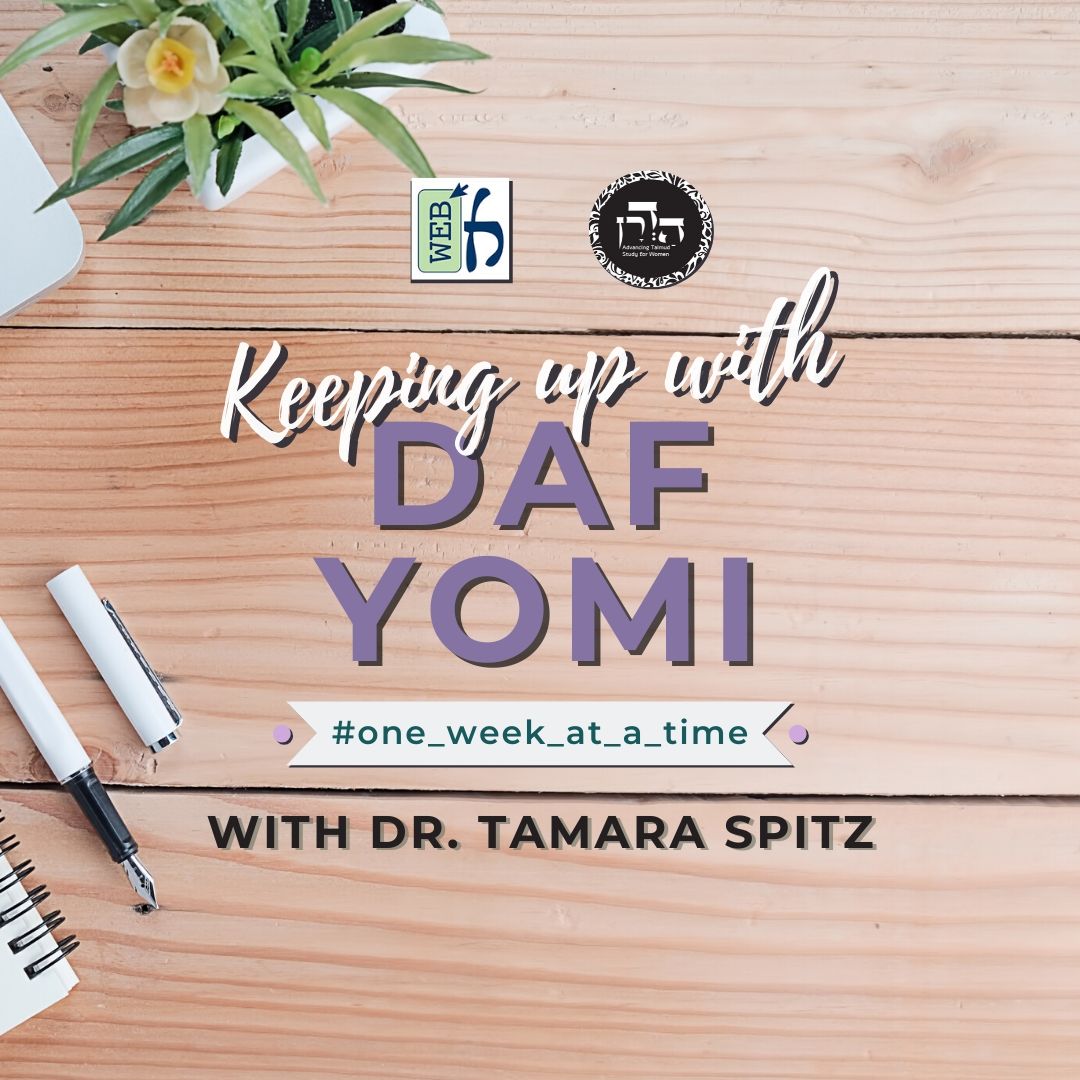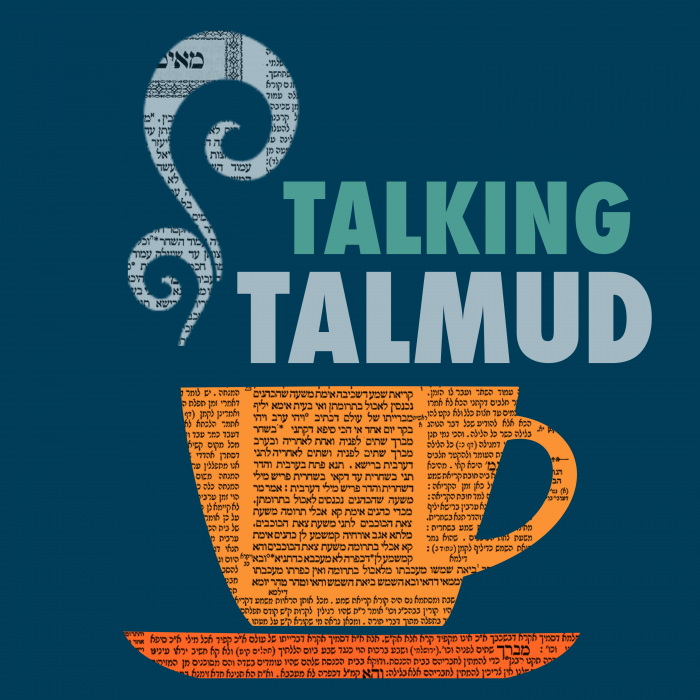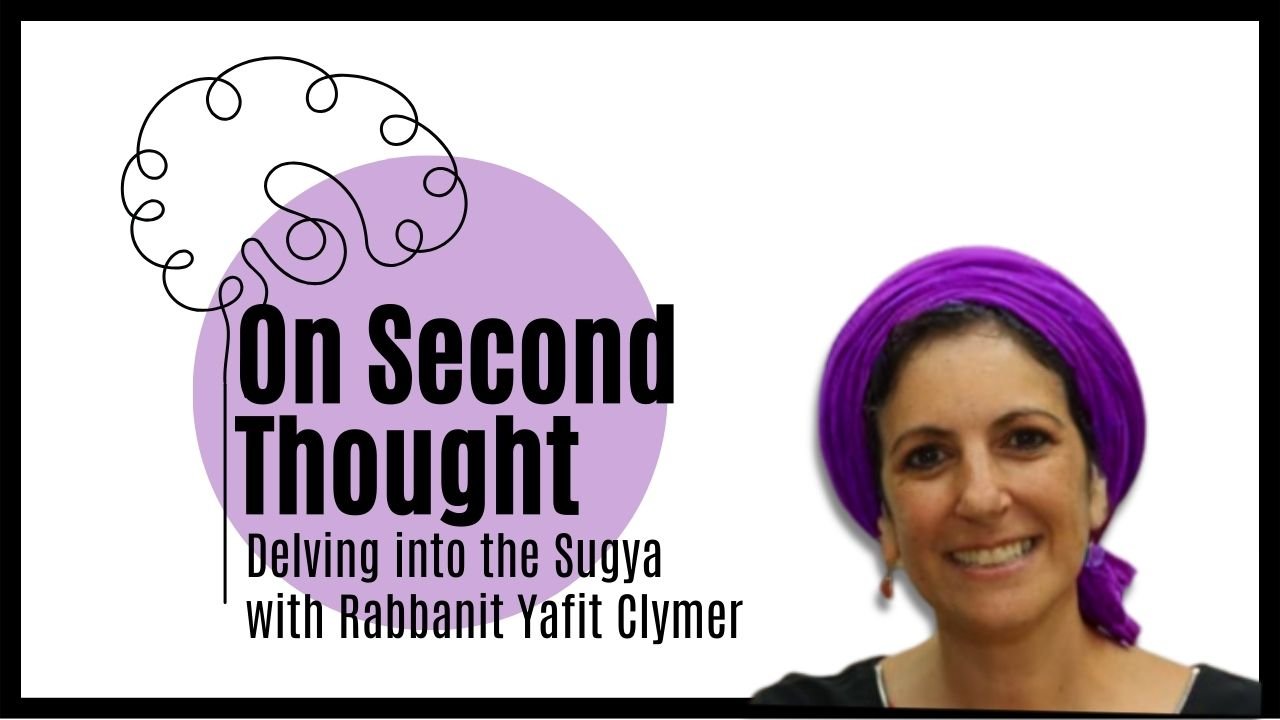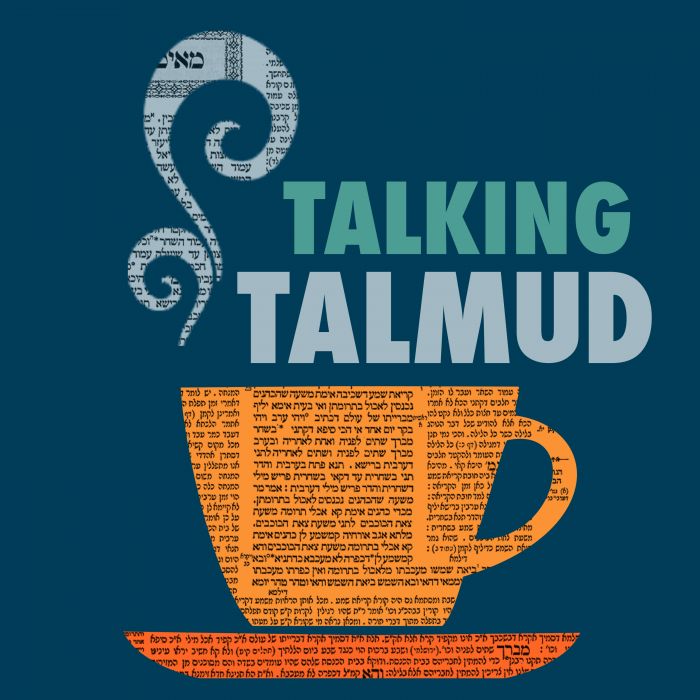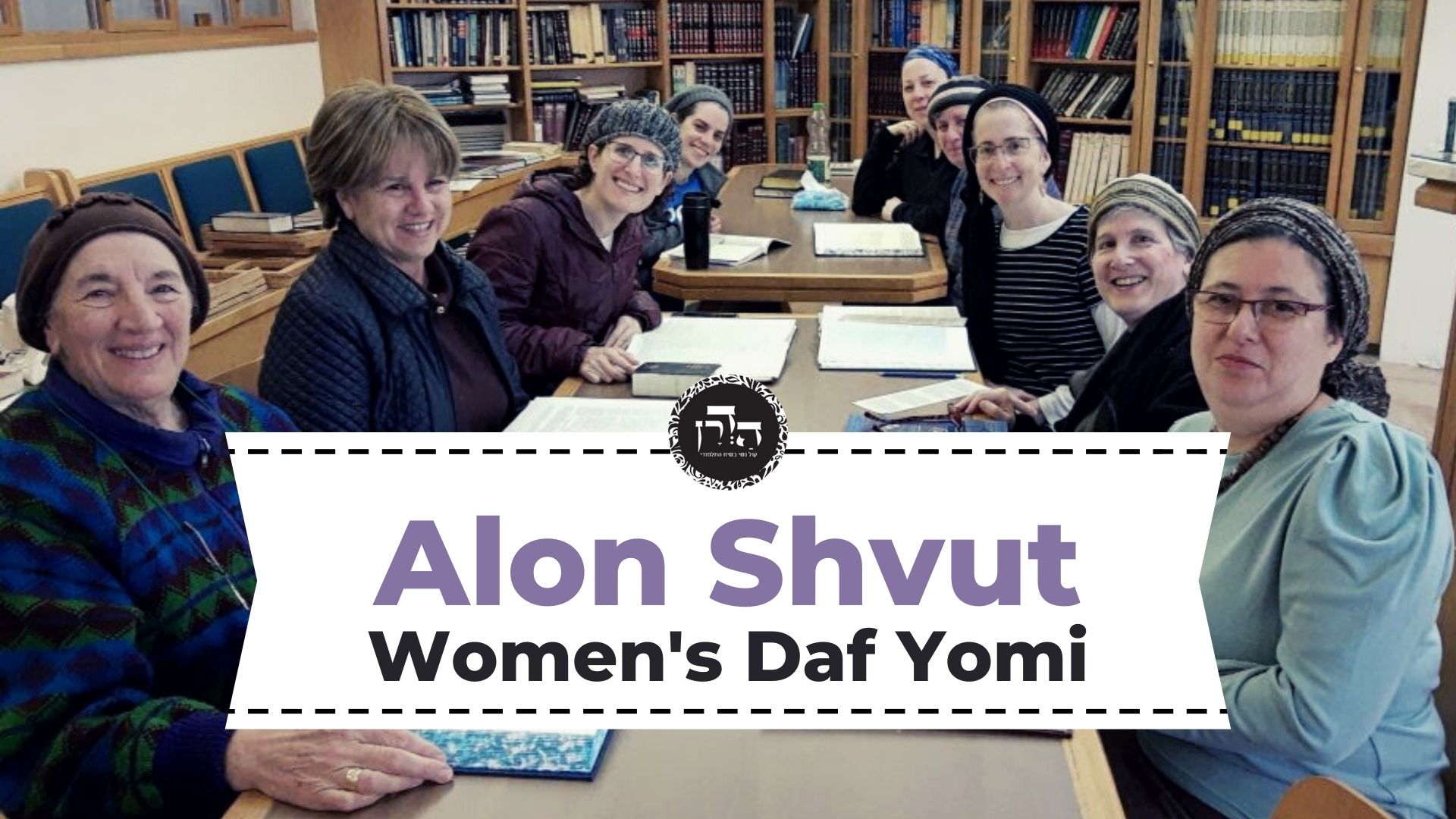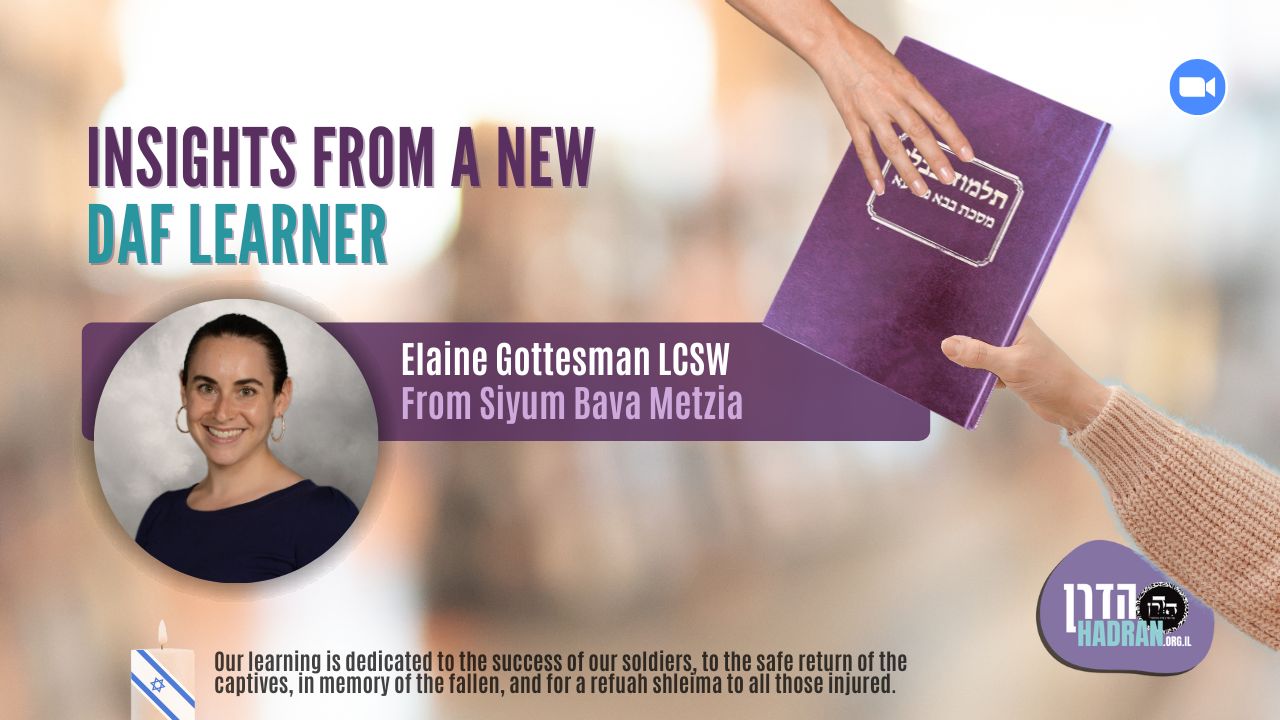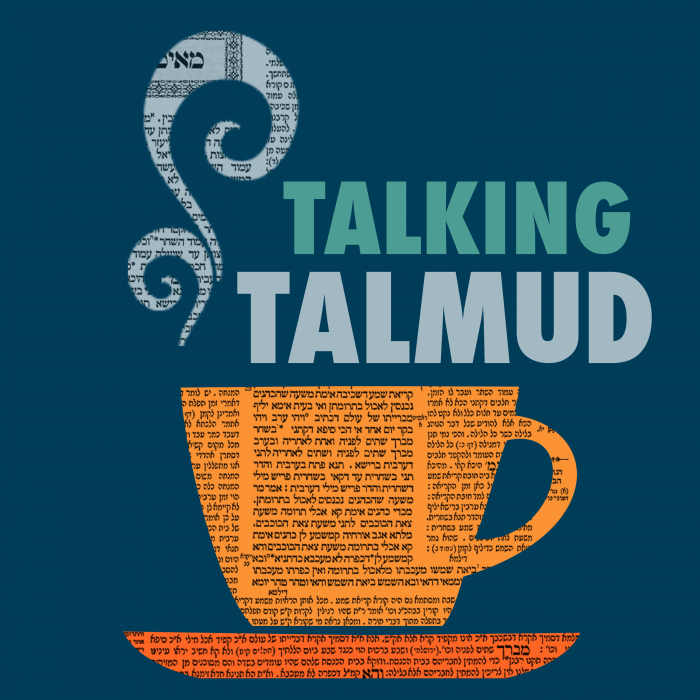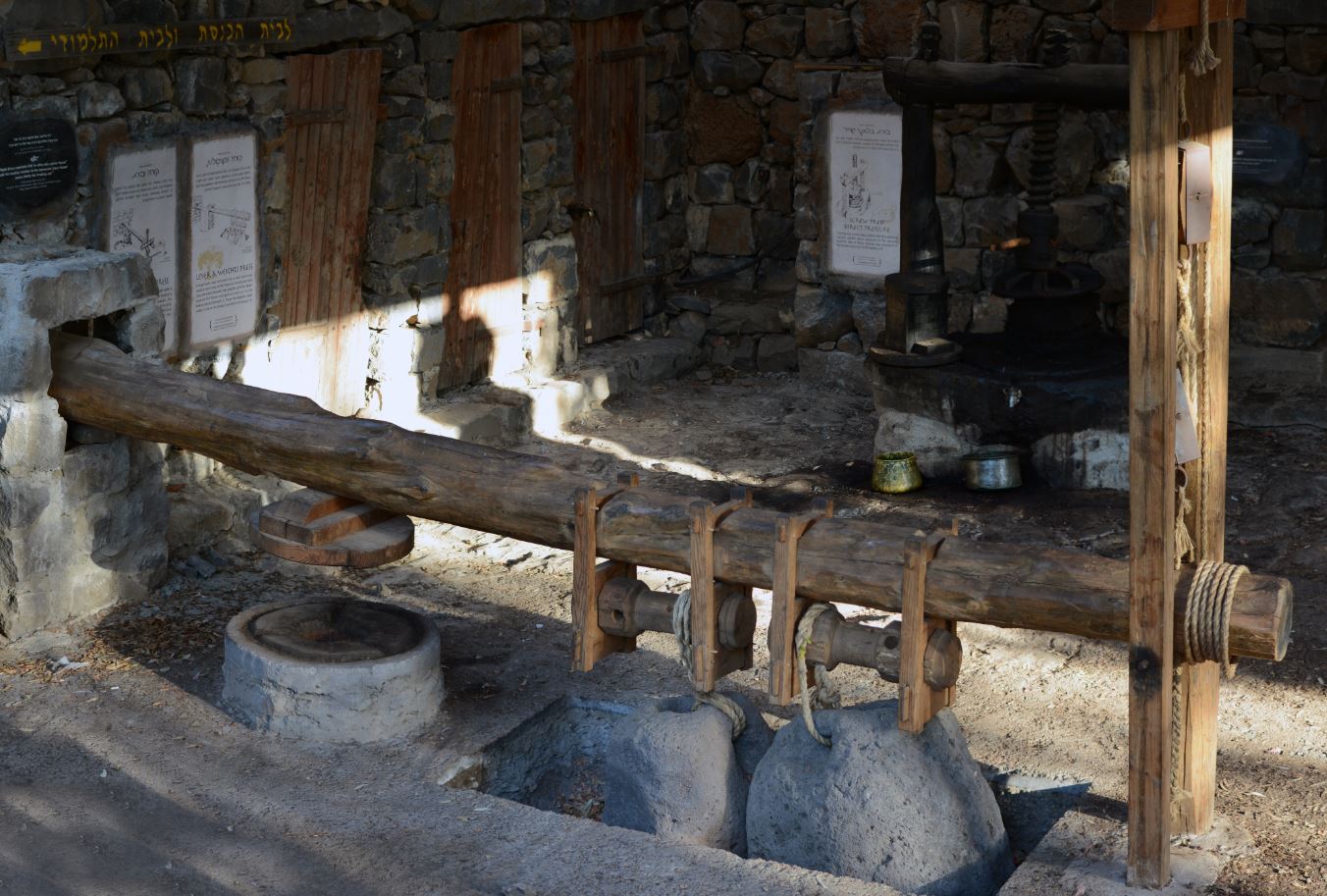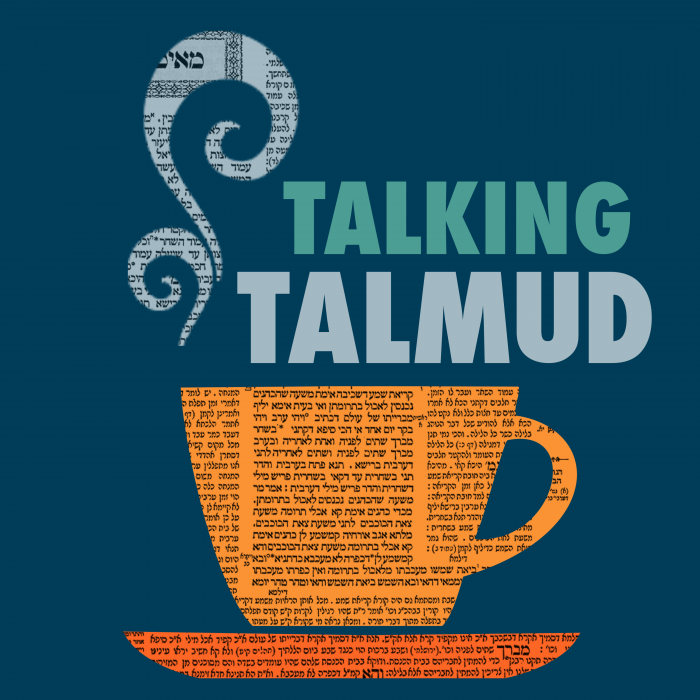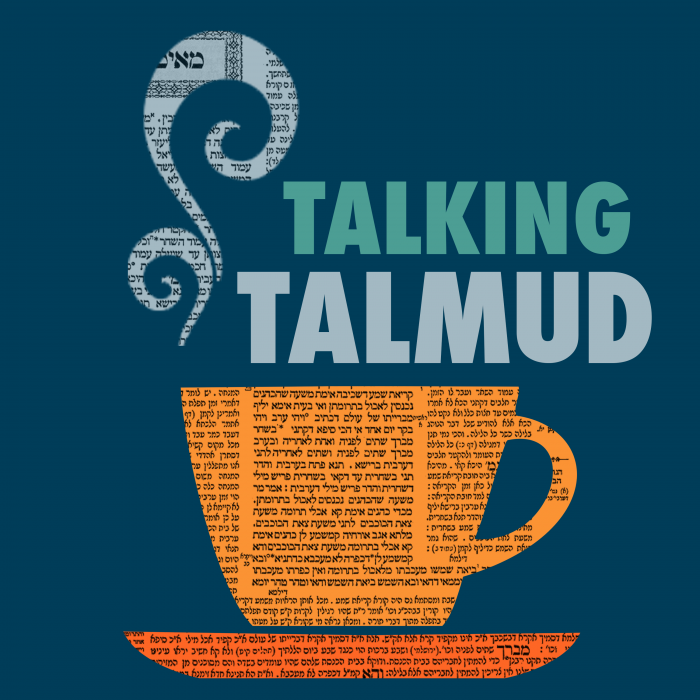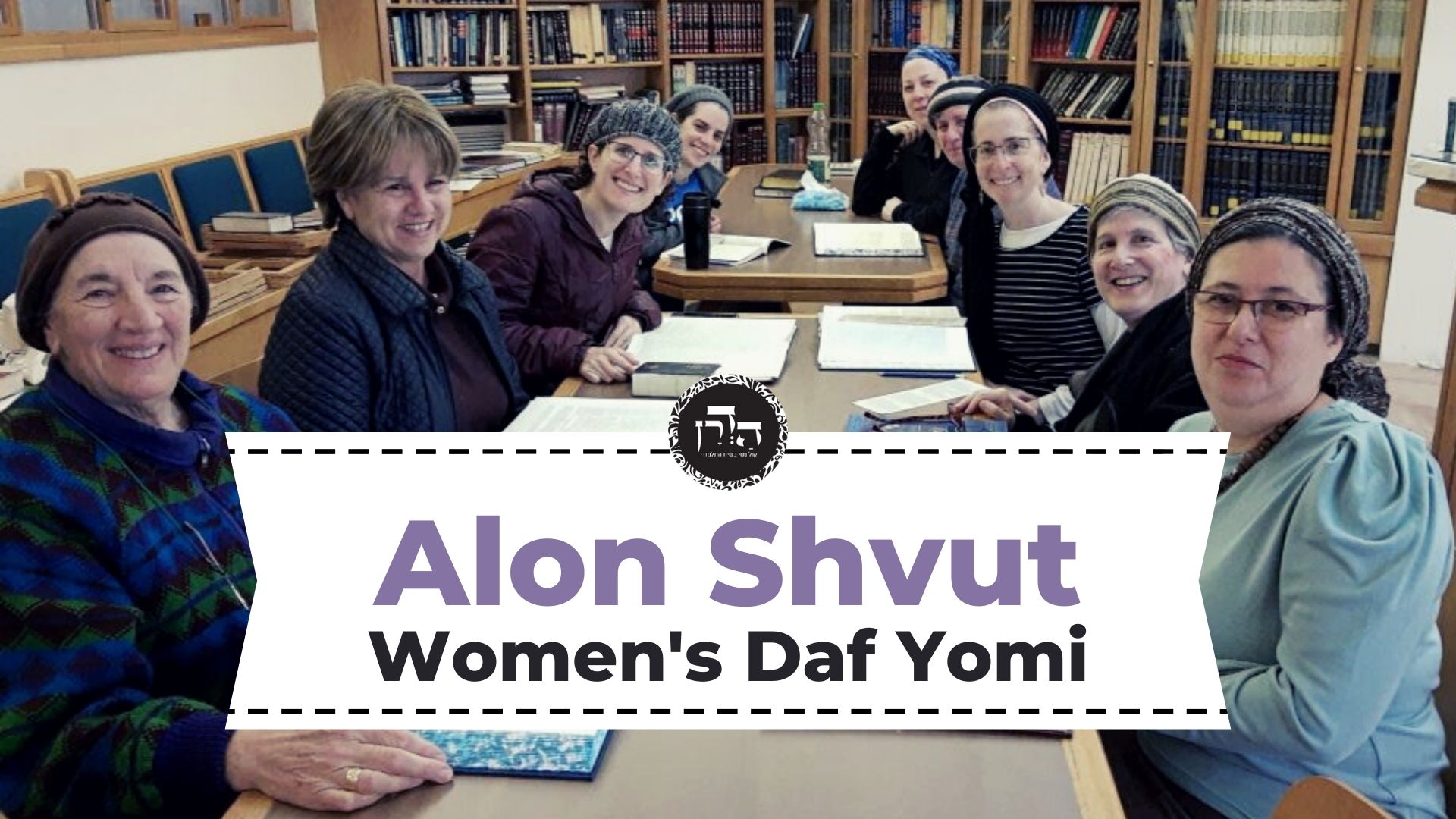In the verse regarding the leader’s goat sin offering, what does the word “it” come to exclude? Several suggestions are offered. Regarding leavening, one is obligated if one continued a part of the leavening process of a meal offering even if it had already leavened (for example, baking it after it was already leavened from kneading). Would the same things still apply in other cases? The act of leavening is also different from a regular act as the leavening happens on its own and yet one is obligated. This is compared to putting a piece of meat on the fire on Shabbat as the cooking happens by the fire and not by a person.
This month’s learning is dedicated in memory of Rabbi Dr. Raymond Harari z”l, on his 1st yahrzeit. As an educator, principal of Yeshiva of Flatbush, and community rabbi, he inspired thousands with his wisdom, warmth, and unwavering commitment to Torah.
Want to dedicate learning? Get started here:

Today’s daily daf tools:
This month’s learning is dedicated in memory of Rabbi Dr. Raymond Harari z”l, on his 1st yahrzeit. As an educator, principal of Yeshiva of Flatbush, and community rabbi, he inspired thousands with his wisdom, warmth, and unwavering commitment to Torah.
Today’s daily daf tools:
Delve Deeper
Broaden your understanding of the topics on this daf with classes and podcasts from top women Talmud scholars.
New to Talmud?
Check out our resources designed to help you navigate a page of Talmud – and study at the pace, level and style that fits you.
The Hadran Women’s Tapestry
Meet the diverse women learning Gemara at Hadran and hear their stories.
Menachot 56
לרבות שעירי עבודת כוכבים לסמיכה
The term “of the goat” serves to include the goats brought as communal sin offerings for idol worship in the requirement of placing hands on the head of an offering.
מתקיף לה רבינא תינח לרבי יהודה לרבי שמעון מאי איכא למימר
Ravina objects to this: This works out well according to the opinion of Rabbi Yehuda, who says that the offering of Nahshon was included in the requirement of placing hands on the head of the animal. But according to the opinion of Rabbi Shimon, what is there to say? Why should the Torah write the term “it,” since there is no reason to assume that it would require slaughter in the north?
א”ל מר זוטרא בריה דרב מרי לרבינא לרבי יהודה נמי מאי דאיתרבי איתרבי מאי דלא איתרבי לא איתרבי
Mar Zutra, son of Rav Mari, said to Ravina: And according to the opinion of Rabbi Yehuda as well, why not say that for that which it was included, i.e., placing hands on the head of an animal, it was included; and for that which it was not included, i.e., slaughter in the north, it was not included. Why would one think that the obligation to slaughter in the north applies to the offering of Nahshon merely because the requirement of placing hands applies to that offering?
וכי תימא אי לא מעטיה קרא הוה אמינא תיתי בבנין אב סמיכה גופה לישתוק קרא מיניה ותיתי בבנין אב אלא שעה מדורות לא ילפינן הכא נמי שעה מדורות לא ילפינן
And if you would say that had the verse not excluded the offerings of the princes I would say that one could derive the requirement for slaughter in the north via a paradigm from all other sin offerings, if so, one could also derive the requirement for placing hands on the head of an animal itself via the same paradigm. Rather, the reason that the requirement of placing hands cannot be derived via a paradigm is that we do not learn the requirements of the sin offering of Nahshon, which was for the time of the inauguration of the Tabernacle alone, from the requirements of sin offerings applicable to all generations. So too, the requirement of slaughter in the north cannot be derived via a paradigm because we do not learn the requirements of the sin offering of Nahshon, which was for the time of the inauguration of the Tabernacle alone, from the requirement of sin offerings applicable to all generations.
אלא אותו טעון צפון ואין השוחט עומד בצפון
Rather, the term “it” stated with regard to the sin offering of a king serves to teach that it must be slaughtered in the north of the Temple courtyard, but the one who slaughters it does not need to stand in the north when he slaughters. The offering would be valid even if he were to stand in the south of the courtyard and use a long knife to slaughter the animal that is positioned in the north.
מדרבי אחייה נפקא דתניא רבי אחייה אומר (ויקרא א, יא) ושחט אותו על ירך המזבח צפונה מה ת”ל
The Gemara challenges this: The halakha of the one who slaughters has already been derived from the statement of Rabbi Aḥiyya, as it is taught in a baraita: Rabbi Aḥiyya says: The verse states with regard to the burnt offering: “And he shall slaughter it on the side of the altar northward before God” (Leviticus 1:11). Why must the verse state the exclusionary term “it”?
לפי שמצינו במקבל שעומד בצפון ומקבל בצפון ואם עמד בדרום וקיבל בצפון פסול יכול אף זה כן ת”ל אותו אותו בצפון ולא השוחט צריך להיות עומד בצפון
He explains: Since we have found that the priest stands in the north and collects the blood from the neck of the animal in the north, and if he stood in the south and collected the blood in the north the offering is disqualified, one might have thought that this is so also with regard to this one who slaughters the offering. Therefore, the verse states: “And he shall slaughter it,” to teach that it, the animal, must be in the north, but the one who slaughters does not have to be standing in the north of the Temple courtyard when he slaughters the animal. The question returns: What is derived from the exclusionary term “it” stated with regard to the sin offering of a king?
אלא אותו בצפון ואין בן עוף בצפון סלקא דעתך אמינא ליתי בק”ו מבן צאן ומה בן צאן שלא קבע לו כהן קבע לו צפון בן עוף שקבע לו כהן אינו דין שנקבע לו צפון
The Gemara answers: Rather, the term “it” stated with regard to the sin offering of a king serves to teach that it, a goat brought as a sin offering, must be slaughtered in the north, but a bird brought as an offering does not need to be killed in the north. It might enter your mind to say: Let it be derived that a bird must be killed in the north by an a fortiori inference from the halakha of a sheep, as follows: Just as is the case for a sheep brought as a burnt offering, that the Torah did not fix that its slaughter must be performed by a priest, yet nevertheless it fixed that its slaughter must be in the north, with regard to a bird brought as an offering, for which the Torah did fix that its slaughter must be performed by a priest, is it not logical that the Torah should also fix its slaughter in the north? Therefore, the verse states “it,” to exclude a bird from the requirement of being killed in the north.
מה לבן צאן שכן קבע לו כלי
The Gemara questions the logical inference. One cannot derive the halakha of a bird offering from the halakha of a sheep offering, as what is notable about a sheep offering? It is notable in that the Torah fixed the requirement that it be slaughtered with a utensil, i.e., a knife. By contrast, a bird is killed by the priest pinching the nape of its neck with his fingernail, without a utensil. Therefore, the term “it” cannot serve to counter this derivation. If so, there is no reason to think that a bird should also have to be killed in the north, and the term “it” is not necessary to exclude this possibility.
אלא אותו בצפון ואין פסח בצפון פסח מדר”א בן יעקב נפקא
The Gemara explains: Rather, the term “it” stated with regard to the sin offering of a king serves to teach that it, the goat of the king, is slaughtered in the north, but the Paschal offering is not slaughtered in the north. The Gemara raises a difficulty: The halakha that the Paschal offering need not be slaughtered in the north is not derived from the term: “It,” but rather it is derived as stated by Rabbi Eliezer ben Yaakov.
דתניא רבי אליעזר בן יעקב אומר יכול יהא הפסח טעון צפון ודין הוא ומה עולה שלא קבע לה זמן בשחיטתה קבע לה צפון פסח שקבע לו זמן לשחיטתו אינו דין שקבע לו צפון
As it is taught in a baraita: Rabbi Eliezer ben Yaakov says: One might have thought that a Paschal offering requires slaughter in the north. And this can be derived through a logical inference: Just as in the case of a burnt offering, for which the Torah did not fix a time for its slaughter yet fixed that it requires slaughter in the north, with regard to a Paschal offering, for which the Torah fixed a time for its slaughter, i.e., it must be slaughtered in the afternoon of the fourteenth day of Nisan, is it not logical that the Torah would fix that it must be slaughtered in the north? Therefore, the verse states “it,” to exclude the Paschal offering from the requirement of slaughter in the north.
מה לעולה שכן כליל
The Gemara questions the logical inference. One cannot derive the halakha of a Paschal offering from the halakha of a burnt offering, as what is notable about a burnt offering? It is notable in that the Torah teaches that it is entirely burned on the altar. This is not so with regard to a Paschal offering.
מחטאת מה לחטאת שכן מכפרת על חייבי כריתות
The Gemara continues: If you would suggest learning a logical inference from the halakha of a sin offering, which is not entirely burned upon the altar yet is slaughtered only in the north, this too can be refuted. As what is notable about a sin offering? It is notable in that it has the power to atone for those sins liable for punishment by excision from the World-to-Come [karet], which is not so with regard to a Paschal offering.
מאשם מה לאשם שכן קדשי קדשים מכולהו נמי שכן קדשי קדשים
The Gemara continues: If you would suggest learning a logical inference from the halakha of a guilt offering, which is not entirely burned, does not atone for those sins liable for punishment by karet, and is slaughtered only in the north, this too can be refuted. As what is notable about a guilt offering? It is notable in that it is an offering of the most sacred order, which is not so with regard to a Paschal offering. The Gemara adds: Having noted this distinction between a guilt offering and a Paschal offering, one can say that for all of the three offerings the halakha of a Paschal offering cannot be derived from them either, since each of them is an offering of the most sacred order.
אלא לעולם כדקאמרינן מעיקרא אותו בצפון ואין השוחט בצפון ודקא קשיא לך מדר’ אחייה נפקא דר’ אחייה לאו למעוטי שוחט בצפון הוא דאתא אלא הכי קאמר אין השוחט בצפון אבל מקבל בצפון
The Gemara returns to the earlier inference: Rather, the term “it” teaches as we said initially: It, i.e., the animal, must be standing in the north, but the one who slaughters the animal does not have to stand in the north. And that which is difficult for you, that we derive this halakha from the statement of Rabbi Aḥiyya, is in fact not difficult. The derivation of Rabbi Aḥiyya from the term “it” does not come to exclude one who slaughters from the requirement to slaughter in the north, since that is known already from the term “it” stated with regard to the sin offering of a king. Rather, this is what Rabbi Aḥiyya is saying: The one who slaughters the animal does not have to stand in the north, but by inference, the one who collects the blood from the neck of the animal must stand in the north.
מקבל מלקח ולקח נפקא לקח ולקח לא משמע ליה:
The Gemara questions this inference: The halakha that the one who collects the blood from the neck of the animal must stand in the north is derived from the fact that the Torah could have written: The priest shall take, and instead writes: “And the priest shall take” (Leviticus 4:34). The Gemara explains: This tanna does not learn anything from this distinction between: The priest shall take, and: “And the priest shall take.” Since he does not agree with this derivation, he must therefore derive the requirement to collect the blood while standing in the north from a different verse.
וחייב על לישתה ועל עריכתה ועל אפייתה: אמר רב פפא אפאה לוקה שתים אחת על עריכתה ואחת על אפייתה והא אמרת מה אפייה מיוחדת שהיא מעשה יחידי וחייבין עליה בפני עצמה
§ The mishna teaches: And one is liable to be flogged for kneading the meal offering, and for shaping it, and for baking it, if the meal offering becomes leaven. Rav Pappa said: If one baked a meal offering as leaven he is flogged with two sets of lashes, one for shaping the dough and one for baking it. The Gemara raises a difficulty: But you said in the baraita: Just as the act of baking is notable in that it is a single action and one is liable to receive lashes for it by itself; this indicates that one receives one set of lashes for baking a meal offering as leavened bread, not two.
לא קשיא הא דעריך הוא ואפה הוא הא דעריך חבריה ויהיב ליה ואפה
The Gemara answers: This is not difficult, as this statement of the baraita, i.e., that one receives a single set of lashes for baking, is referring to a case where he shaped the dough and he, the same person, also baked it. Since he already incurred liability to receive lashes for shaping the dough before he baked it, he is not liable again for shaping when he bakes it. That statement of Rav Pappa, that one who bakes the dough is liable to receive two sets of lashes, is referring to a situation where another person shaped the dough and gave the shaped dough to him, and he baked it. Although the one who shaped it is liable to receive lashes for the act of shaping, nevertheless, the one who bakes it is liable to receive two sets of lashes, as his act of baking also completed the shaping of the dough.
ת”ר בכור שאחזו דם מקיזין אותו את הדם במקום שאין עושין בו מום ואין מקיזין את הדם במקום שעושין בו מום דברי ר”מ
§ The Gemara continues to discuss the leavening of a meal offering. The Sages taught in a baraita (Tosefta, Bekhorot 3:6): In the case of an unblemished firstborn kosher animal whose blood circulation is constricted, a condition that can be healed only through bloodletting, one may let the animal’s blood by cutting it in a place where the incision does not cause a permanent blemish. But one may not let the animal’s blood by cutting it in a place where the incision causes a permanent blemish, as it is prohibited to intentionally cause a blemish in a firstborn animal; this is the statement of Rabbi Meir.
וחכ”א יקיז אף במקום שעושין בו מום ובלבד שלא ישחוט [על אותו מום] ר”ש אומר
And the Rabbis say: One may even let the animal’s blood by cutting it in a place where the incision causes a permanent blemish, provided that he does not slaughter the animal on the basis of that blemish, even though in general, a firstborn animal may be slaughtered once it develops a permanent blemish. The Rabbis maintain that in this case, since he caused the blemish himself, he may not slaughter it until it develops a different, unrelated blemish. Rabbi Shimon says:
אף נשחט על אותו מום רבי יהודה אומר אפילו מת אין מקיזין לו את הדם
The animal may even be slaughtered on the basis of that blemish. Rabbi Yehuda says: Even if the firstborn would die if its blood is not let, one may not let its blood at all.
א”ר חייא בר אבא אמר רבי יוחנן הכל מודים במחמץ אחר מחמץ שהוא חייב דכתיב (ויקרא ב, יא) לא תעשה חמץ (ויקרא ו, י) ולא תאפה חמץ
The Gemara discusses similar cases, including examples involving meal offerings. Rabbi Ḥiyya bar Abba says that Rabbi Yoḥanan says: All of the Sages who disagree as to whether one may let the blood of a firstborn animal whose blood circulation is constricted concede that one who leavens a meal offering after another had already leavened it is liable to receive lashes for the additional leavening, as it is written: “No meal offering that you shall bring to the Lord shall be made with leaven” (Leviticus 2:11), and it is also stated: “It shall not be baked with leaven” (Leviticus 6:10). This indicates that one is liable for every act of leavening performed on a meal offering.
במסרס אחר מסרס שהוא חייב דכתיב (ויקרא כב, כד) ומעוך וכתות ונתוק וכרות אם על כורת הוא חייב על נותק לא כל שכן אלא להביא נותק אחר כורת שהוא חייב
Similarly, everyone agrees that one who castrates an animal after one who castrates it is liable, as it is written: “Those whose testicles are bruised, or crushed, or detached, or cut, shall not be offered to the Lord, and you shall not do this in your land” (Leviticus 22:24). If one is liable when the seminal vesicles are cut, then when the testicles are detached altogether is he not all the more so liable? Rather, this verse serves to include one who detaches the testicles after one who cuts the seminal vesicles, to indicate that he is liable. Apparently, one is liable for castrating an animal that is already sterilized.
לא נחלקו אלא במטיל מום בבעל מום ר’ מאיר סבר כל מום לא יהיה בו ורבנן סברי (ויקרא כב, כא) תמים יהיה לרצון
These Sages disagree only with regard to one who inflicts a blemish on an already blemished animal, such as one whose blood circulation is constricted. Rabbi Meir maintains that as the verse states: “It shall be perfect to be accepted; there shall be no blemish in it” (Leviticus 22:21), this categorical statement includes even the infliction of a blemish on an offering that is already blemished. And the Rabbis maintain that the phrase “it shall be perfect to be accepted” indicates that the prohibition against inflicting a blemish applies only to an animal that is currently perfect, i.e., unblemished, and can therefore be accepted, meaning that it is suitable to be sacrificed upon the altar. If the animal is already blemished, there is no prohibition against inflicting an additional blemish upon it.
ור’ מאיר נמי הכתיב תמים יהיה לרצון ההוא למעוטי בעל מום מעיקרא
The Gemara analyzes this dispute. And according to the opinion of Rabbi Meir, who derives the halakha from the phrase “there shall be no blemish in it,” isn’t it written also: “It shall be perfect to be accepted”? The Gemara answers: That verse serves to exclude only an animal that was blemished from the outset, i.e., an animal that was born with a blemish. In such a case, there is no prohibition to inflict an additional blemish on it. But if the animal was initially unblemished and later developed a blemish, it is prohibited to inflict another blemish upon it.
בעל מום מעיקרא דיקלא בעלמא הוא
The Gemara rejects this suggestion: There is no need to exclude an animal that was blemished from the outset, as it is merely like a palm tree, i.e., it is an item that can never attain the status of an animal consecrated as an offering. Therefore, it is obvious that the prohibition against inflicting a blemish does not apply to this animal.
אלא למעוטי פסולי המוקדשים לאחר פדיונם סלקא דעתך אמינא הואיל ואסירי בגיזה ועבודה במומם נמי ליתסרי קמ”ל
Rather, Rabbi Meir maintains that the phrase “it shall be perfect to be accepted” serves to exclude disqualified consecrated animals, to teach that after their redemption, when they become non-sacred, the prohibition against inflicting a blemish does not apply to them any longer. This exclusion is necessary, as it might enter your mind to say that since it is prohibited to shear disqualified consecrated animals or use them for labor even after they have been redeemed and are non-sacred, perhaps let it also be prohibited to inflict a blemish upon them. Consequently, this verse teaches us that there is no prohibition against inflicting a blemish upon these animals.
ורבנן נמי הכתיב (ויקרא כב, כא) כל מום לא יהיה בו ההוא מיבעי ליה לכדתניא וכל מום לא יהיה בו אין לי אלא שלא יהא בו מום מנין שלא יגרום לו ע”י אחרים שלא יניח בצק או דבילה על גבי האוזן כדי שיבא הכלב ויטלנו ת”ל כל מום אמר מום ואמר כל מום
The Gemara analyzes the opinion of the Rabbis. And according to the opinion of the Rabbis as well, who base their opinion on the phrase: “It shall be perfect to be accepted,” isn’t it written: “There shall not be any blemish in it,” which indicates an expansion of the prohibition against inflicting a blemish? The Gemara answers: That verse is necessary for that which is taught in a baraita: The verse states: “There shall not be any blemish in it” (Leviticus 22:21). I have derived only that it may not have a blemish caused directly by human action. From where is it derived that one may not cause a blemish to be inflicted upon it indirectly by means of other agents, e.g., that one may not place dough or pressed figs on its ear so that a dog will come and take it, thereby biting off part of the animal’s ear and leaving it blemished? The verse states: “Any blemish.” It says: “Blemish,” and it says “Any blemish”; the word “no” serves to teach that one may not cause a blemish indirectly.
אמר ר’ אמי הניח שאור ע”ג עיסה והלך וישב לו ונתחמצה מאליה חייב עליה כמעשה שבת ומעשה שבת כי האי גוונא מי מיחייב והאמר רבה בר בר חנה
§ The Gemara returns to discuss the leavening of a meal offering. Rabbi Ami says: If one placed leaven, i.e., dough that has leavened to such an extent that it is no longer used as food but as a leavening agent for other dough, on top of the dough of a meal offering, and he went and sat himself down to wait, meaning that he performed no other action, and the dough then leavened of its own accord, he is liable to receive lashes for it. This is similar to performing a prohibited action on Shabbat. The Gemara questions this comparison: And is one liable for performing a prohibited action on Shabbat in a case like this? But doesn’t Rabba bar bar Ḥana say


